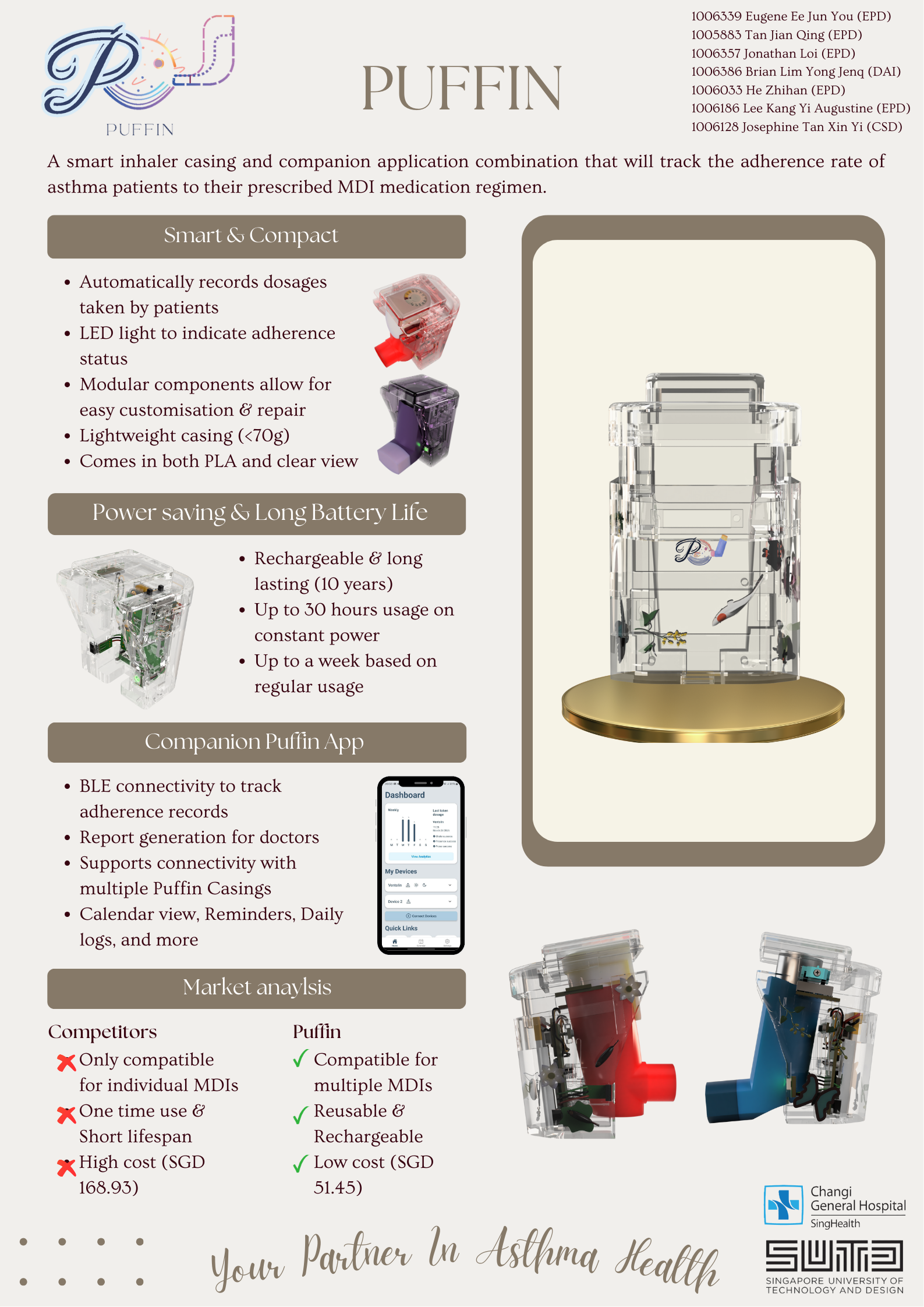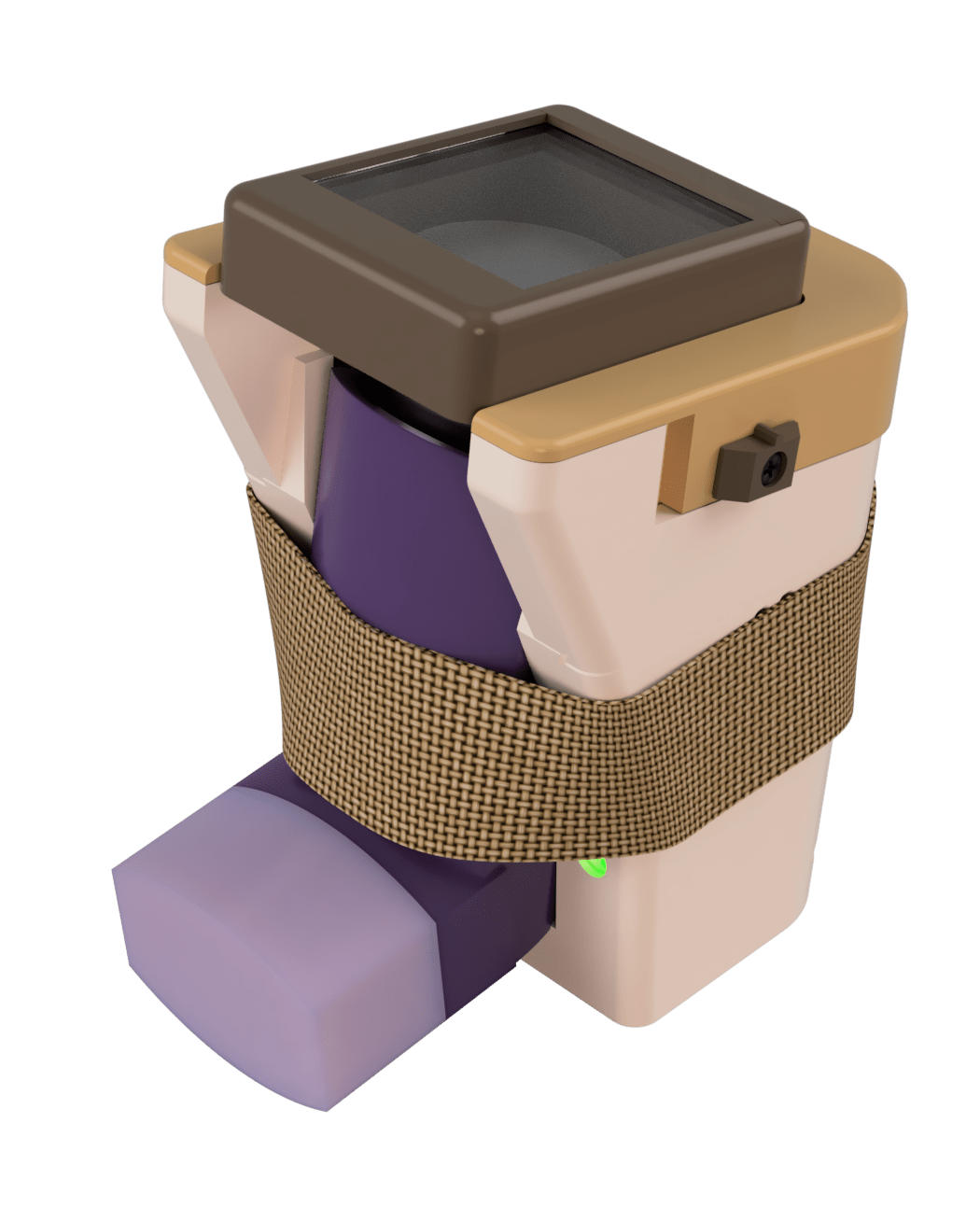Puffin Casing
The Puffin Casing is a smart casing which automatically records the MDI dosages taken by the patient, and syncs it to the Puffin App. It consists of 2 main sections, which are the physical casing, as well as the electronics within.
The casing consists of 5 main sections, which are the Bottom Body, Height Adjuster, Securing Belt, On-Off switch, and Press Cap.
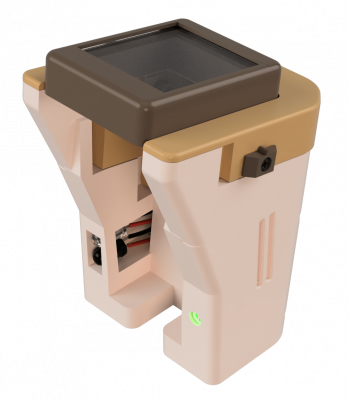
Features of Puffin Casing
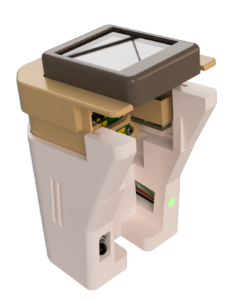 No Assembly required
No Assembly required
No assembly of the individual parts is required by users as the Puffin Casing will come pre-assembled, and will remain as a unit during use. This allows the user to immediately use the casing right after unboxing it!
At the same time, it is easy to assemble and disassemble for repairs and customisations should there be a need to.
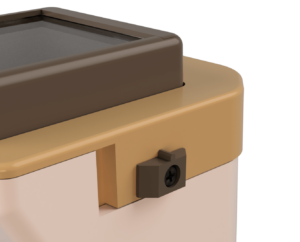 On-Off switch
On-Off switch
The On-Off switch will turn off the electronics within the Puffin Casing, allowing it to save power while not in use. The On-Off switch also mechanically locks the casing, which prevents accidental discharge of the MDI when not in used.
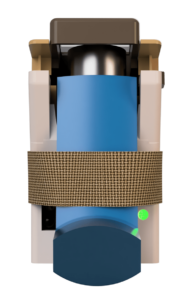 Securing Belt
Securing Belt
The Securing Belt will hold the Seretide and Salbuair MDIs in place during use, preventing them from falling off when shaken during use or when being transported around.
Due to the exact fitting in the Puffin Casing, the securing belt is not required for the Rapihaler.

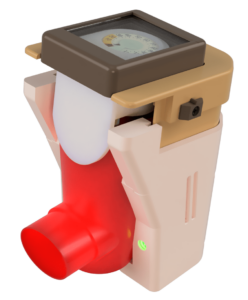
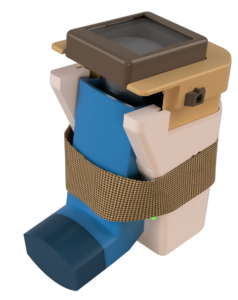 Compatible with various MDIs
Compatible with various MDIs
The Puffin Casing is compatible with various MDIs commonly used in Singapore, which have varying heights, thicknesses, and even features. This makes Puffin Casing much more accessible and increases reuseability for users with multiple inhaler types, or for any users who has to switch MDI types as part of their asthma management.
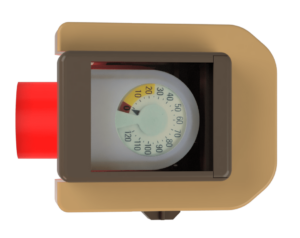 Transparent Cap
Transparent Cap
The transparent cap of the Puffin Casing allows for Rapihaler’s mechanical dosage dial to be seen without having to be removed from the Puffin Casing, greatly increase the usability and convenience of the casing.
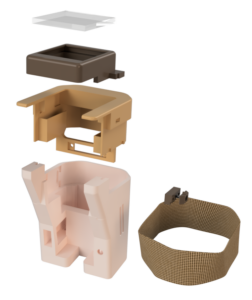 Modular Design
Modular Design
The modular nature of the 5 casing sections allows for easy replacement of parts for both design customisation and repairs. This will also help to reduce repair costs and wastage, as only the faulty parts have to be replaced.
 Design Variants
Design Variants
Other design variants are also available, such as the transparent variation which features intricate patterns within the body of the Puffin Casing.
Having design variants will allow for even greater customisation opportunities, which will let Puffin Casing become much more appealing to use and boost adherence rate in the process.
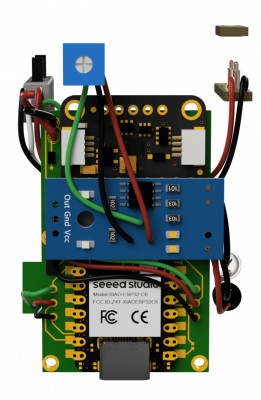
Puffin Electronics
The electronics within the Puffin Casing are essential to ensure that three key factors of Shake, Presence, and Press are recorded by the sensors properly, while keeping the overall casing cost-effective.
The electronics are also designed to be height adjustable alongside the Puffin Casing, to ensure that everything functions seamlessly regardless of the height setting chosen based on the MDI being used.
Features of Puffin Electronics
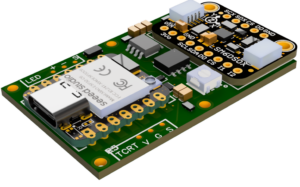 Main PCB
Main PCB
As the main component, the Main PCB holds all the smaller sections together and ensures that they are perfectly integrated while still adhering to the small dimensions of the Puffin Casing.
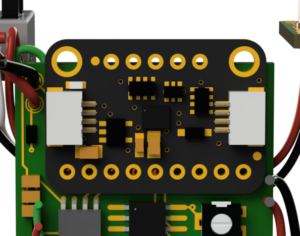 Adafruit LSM6DSO32 6-DoF Accelerometer and Gyroscope
Adafruit LSM6DSO32 6-DoF Accelerometer and Gyroscope
The Adafruit LSM6DSO32 6-DoF Accelerometer and Gyroscope enables gryoscope functions in the Puffin Casing, which is used to detect whether the MDI has been shaken properly prior to the patient taking the dosage.
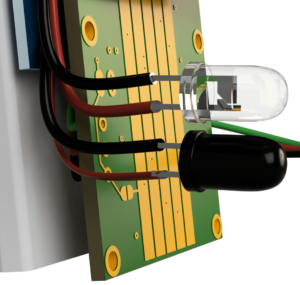 Infrared Obstacle Avoidance Sensor EK125
Infrared Obstacle Avoidance Sensor EK125
The Infrared Obstacle Avoidance Sensor EK1254 will detect the presence of the patient’s face in front of the Puffin Casing, to ensure that they have placed the MDI in their mouth properly before taking the dosage. The detection distance can be adjusted for both direct dosages and dosages alongside the use of spacers, making it compatible for multiple functions.
 Press Pogo PCB
Press Pogo PCB
The Press Pogo PCB is used to detect the pressing of the MDI when a dose is taken. Once pressed, the taken dosage as well as the adherence quality of the 3 key steps of Shake, Presence, and Press will be stored in the internal memory (FRAM) on the main PCB. The stored information will then synced to the Puffin App once the Puffin App is opened.
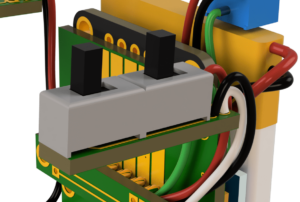 Slide Switches PCB
Slide Switches PCB
The Slide Switches PCB will turn the Puffin Casing On and Off both electronically and mechanically, allowing for saving power when not in use and mechanically locking the cap respectively.
 Back Pogo PCB
Back Pogo PCB
Serving as one of the most important electronics within the Puffin Casing, the Back Pogo PCB is used to connect all electronics within the height adjuster to the Main PCB, thereby allowing all the sensors to function properly.
The contact mechanism between the Main PCB and the Back Pogo PCB via pogo pins allows for the height adjuster’s height to be changed between all height settings without causing the overall circuit to fail at any height settings, thereby ensuring that the electronics will function regardless of the height setting of the casing.
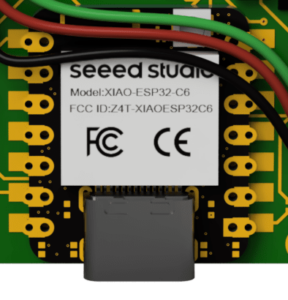 XIAO-ESP32-C6
XIAO-ESP32-C6
As the brains of the whole PCB, the XIAO-ESP32-C6 makes all the sensor operations work properly. Its small form factor allows quick calculations and records to be performed while remaining compact in the Puffin Casing.
 LED indicator
LED indicator
The LED indicator will provide visual feedback on the Puffin Casing’s status, providing the user with information in an intuitive manner.
Violet – Puffin Casing is switched on
Yellow – Partial Adherence
Green – Successful Adherence
Blue – Puffin Casing is syncing with Puffin App
Red – Low battery
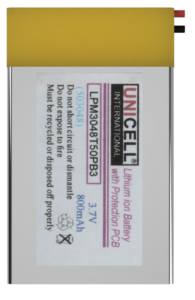 800mAh LiPo battery
800mAh LiPo battery
The 800mAh LiPo battery supplies power to the whole Puffin Casing, offering a compact yet powerful solution. It can last up to 2 weeks per charge under regular use, or even 2.3 years if the device stays switched off!
Users of Puffin are encouraged to charge their devices at least once a week via the USB-C port found at the bottom of the Puffin Casing.
Puffin App
For the database, SQLite was chosen as it lightweight, reliable, and requires no separate backend server. This also ensures that sensitive user data is stored directly on the device rather than transmitted to external servers, thereby minimising privacy risks and meeting PDPA requirements from Changi General Hospital.
SQLite is also widely supported and efficient for applications with moderate data storage needs, making it an ideal fit for the project’s use case.

Features of Puffin App
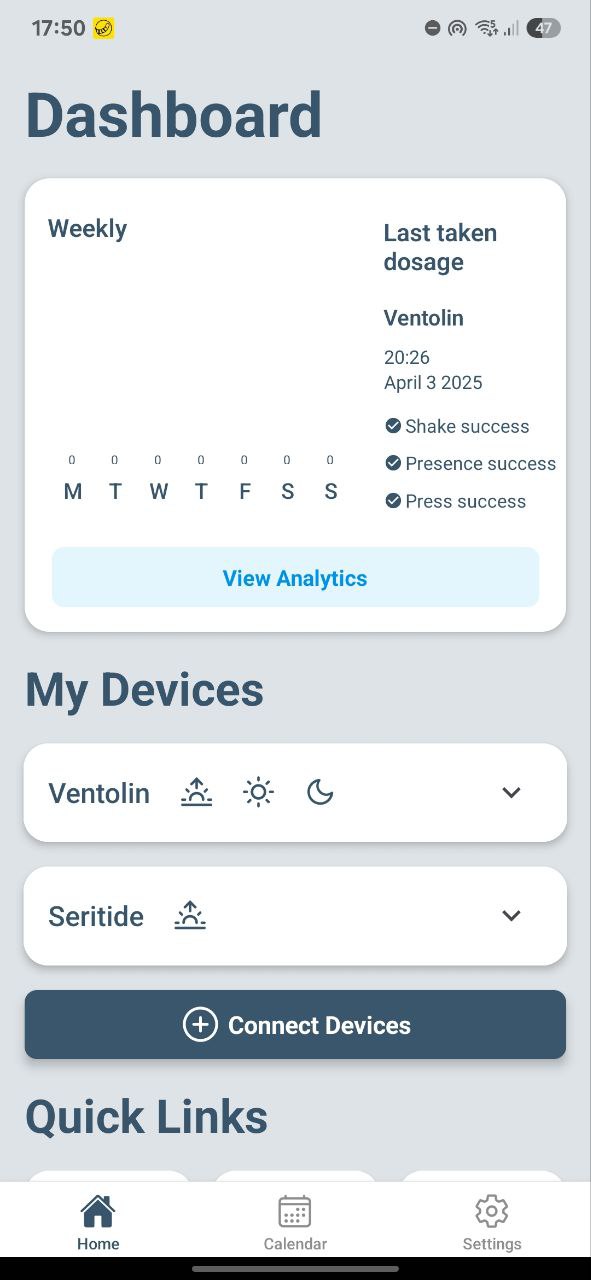
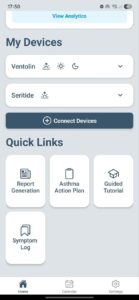 Dashboard
Dashboard
The intuitive Dashboard provides Weekly Adherence statistics and last taken dosage information at a glance, allowing the user and clinicians to quickly identify how well their asthma management has been going recently.
Besides the quick statistics, the Dashboard also shows important information such as all paired Puffin Casings, and various quick links for fast access to common features.

 Usage history
Usage history
The usage history in the analytics screen contains all past MDI usage records. It provides the usage history for Puffin Casings connected to the application, which are sorted by date
Each list item provides the Device name, time taken and an indication for shake, presence and press checks done performed by the Puffin Casing.
The Usage History will be stored even after the relevant Puffin Casing is disconnected, ensuring integrity of the data stored.

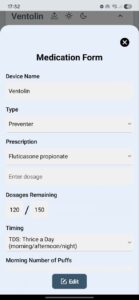 Bluetooth Pairing
Bluetooth Pairing
Pairing a Puffin Casing or even multiple? Fret not! The Puffin App allows for the easy pairing of Puffin Casings via a guided process, making it easy for the user to pair Puffin Casings as required. It even supports multiple Puffin Casing pairings, allowing for effortless asthma management for users with multiple MDIs.
For each initial pairing attempt, the clinicians will be guided on how to fill the medication form, in order to ensure that all the reminders and dosages are accurately keyed in. It also allows the user to set their own reminder timings within the dosage intervals set by the clinicians.

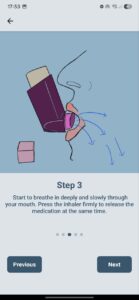 Guided tutorial
Guided tutorial
The Puffin App contains a Guided Tutorial, which shows the proper steps for using MDIs, in order to ensure the maximum effectiveness of delivered doses.
The instructions were written with reference to Singhealth’s directives, and visual aids are provided alongside the written instructions for greater clarity.

 Calendar View
Calendar View
The Calendar View gives a monthly overview of the users medication adherence.
Tasks for each Puffin Casing are listed below the calendar interface, and they display the required number of inhaler puffs based on the medication prescription.
Depending on the adherence rate of these tasks, the calendar will display different colours for each day.
Tasks all completed – Green
Task incomplete – Yellow
Task missed – Red
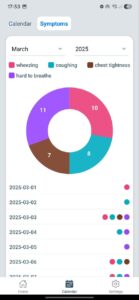
 Symptoms overview
Symptoms overview
The Symptoms overview lists down all daily symptom records saved for each month, which the user can fill up to record the any symptoms they experienced, significant events, or add their own notes.
A summary chart of the smptoms experienced will be displayed at the top, allowing for easy analysis by clinicians. The detailed symptoms also will be listed in chronological order below, with different colour indicators to mark different symptom experienced.
Wheezing – Pink
Coughing – Cyan
Chest tightness – Brown
Hard to breathe – Purple
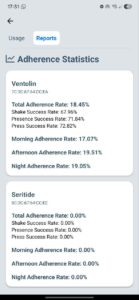
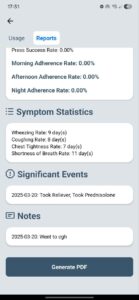 Adherence Statistics
Adherence Statistics
Should the user want to learn more about their adherence rate and other statistics, they can simply check the Adherence Statistics section to see detailed adherence statistics, such as the total adherence rate for each paired MDI, symptoms log, as well as additional comments added by the users for specific dates.
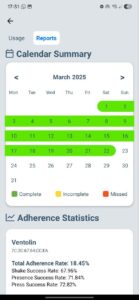
 Report Generation
Report Generation
When the user need to export the Adherence Statistics, they can easily select the desired date range and save it as a PDF.
From there, the user can store the PDF for their own reference, or send the PDF to the clinicians for analysis. The clinicians will now be empowered with accurate asthma management adherence data which they can store and print for their own reference, as well as easily plan better asthma management plans for the patient, benefiting both the asthma patient and the clinicians.
Asthma Action Plan
The Puffin App even includes an Asthma Action Plan, which will guide users on how to manage their asthma based on their condition. The clinicians will update the users’ Asthma Action Plan during clinical visits to eusure that it is up to date.
The Asthma Action Plan in Puffin App follows the colour-coding and formatting of those used by Changi General Hospital, allowing for information to be presented in a clear and accurate manner.
Everyday Asthma Care – Green
When Patient Feels Worse – Yellow
In An Asthma Attack – Red
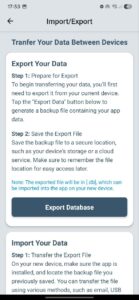
 Data Transfer
Data Transfer
If the user has to transfer data between phones, they can also export and import the database for a seamless transfer. No loss of data from changing devices will occur!
How does one use Puffin?
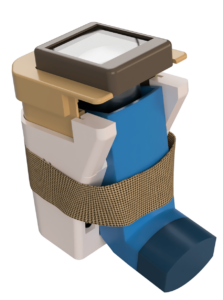 Using Puffin is extremely simple!
Using Puffin is extremely simple!
Simply adjust the Puffin Casing to the correct height setting for the required MDI, and place the MDI in!
After that, turn on the Puffin Casing using the On-Off switch, and pair the Puffin Casing to the Puffin App based on the quick instructions in the Puffin App.
Once the Puffin Casing is connected for the first time, the user no longer has to perform any additional procedures! They can simply use the MDI as usual, by following Singhealth’s guidelines of Shake, Presence, and Press, and the Puffin Casing will automatically sync over all the adherence data to the Puffin App.
After all, the goal of Puffin is to simplify the process of asthma adherence data collection as much as possible, so there is minimal effort required from both the asthmatic patient and the clinicians.
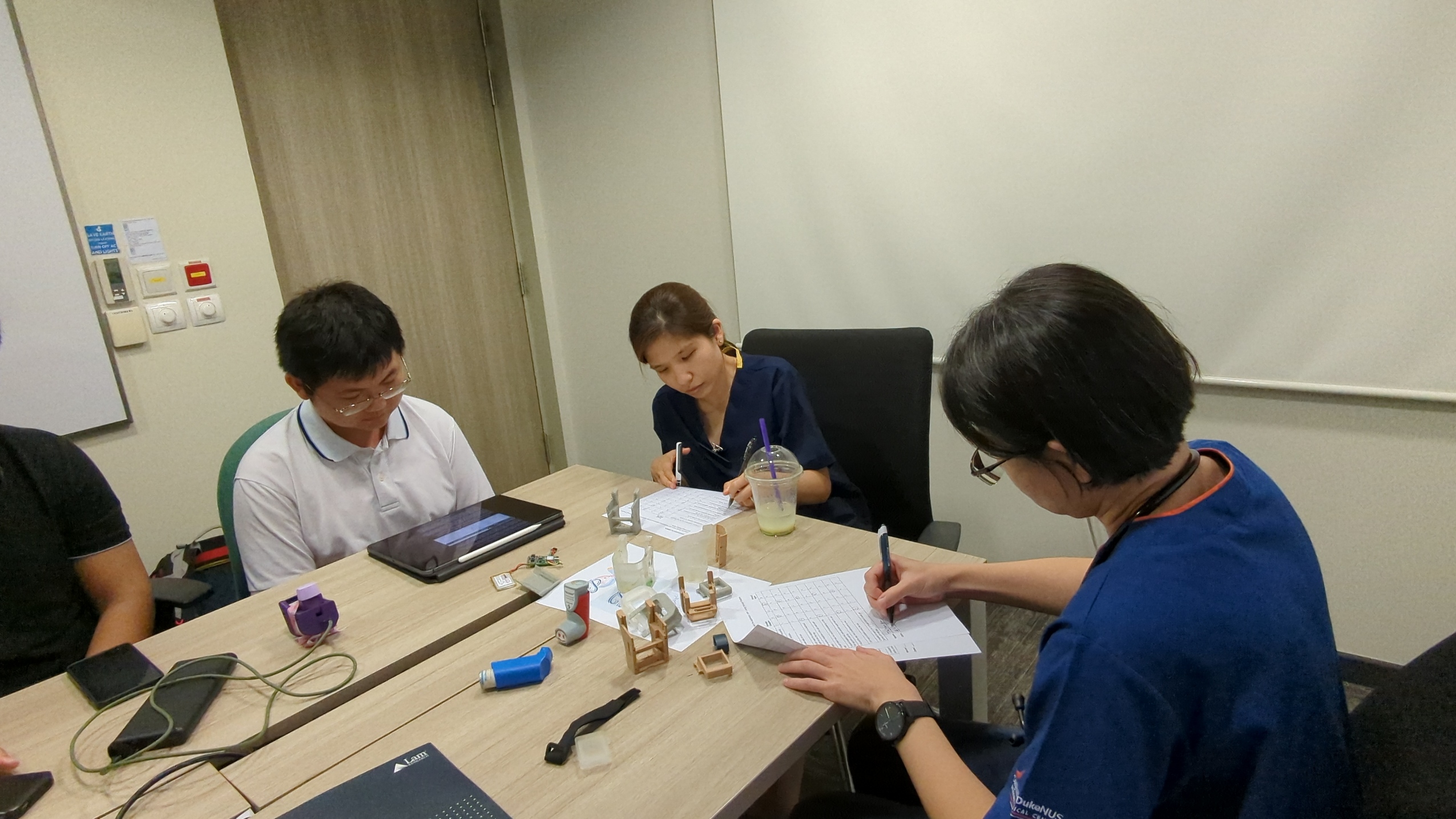
User Testing
Throughout term 7 and term 8, our team visited our Industry Mentors, Dr Tay and Dr Sieow multiple times in order to showcase our ideas for both the Puffin Casing and the Puffin App. During these meetings, valuable feedback was also given by both doctors, and these feedbacks were utilised to create the many variations of Design, Hardware, and Software outputs as seen previously.
Once the final prototype was ready, our team also arranged a proper user testing with Dr Tay and Dr Sieow too in order to verify that both asthmatic patients and clinicians will benefit from Puffin. Both doctors had the opportunity to try out the Puffin Casing and Puffin App in person, as well as witness the syncing process between these two components. Any queries regarding the utilisation of Puffin were also answered.
The evaluation method used for Puffin was System Usability Scale (SUS), which is a ten-item attitude Likert scale used to assess the usability of a product. Typically, the final scores have the following meaning:
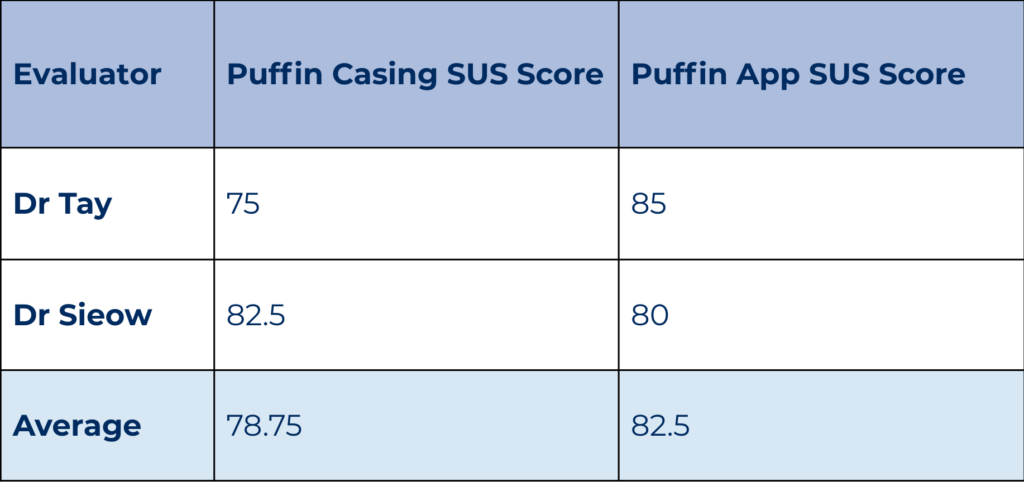
Below 50 – Poor usability
60 to 70 – Average usability
Above 70 – Excellent usability
Based on the test results from Dr Tay and Dr Sieow, both the Puffin Casing and Puffin App shows Excellent Usability, with an average score of 78.57 and 82.5 respectively. This shows that Puffin has been successful in achieving its objectives and is user-friendly, as certified by the feedback of Dr Tay and Dr Sieow.
In summary, our industry mentors loves Puffin!


Why use Puffin over other competitors?
Most competitors on the market only have a software tracker for Asthma Management. One of our main competitors also have adherence tracking casings and app, but they fall behind in other aspects such as cost, modularity, lifetime of device, and ease of repair.
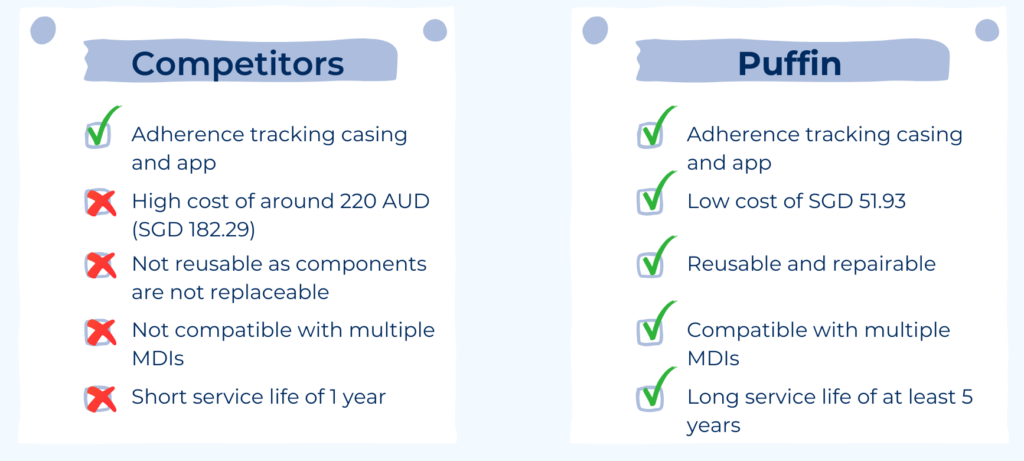
In comparison, Puffin managed to resolve all these issues, making it a strong competitor for asthma adherence tracking devices.
Puffin is also highly affordable, costing around SGD 51.93 per unit based on the prototypes that were developed.
Our team strongly believes that the overall cost can be even lower if Puffin is mass-manufactured and if the parts are sourced from the same locations.
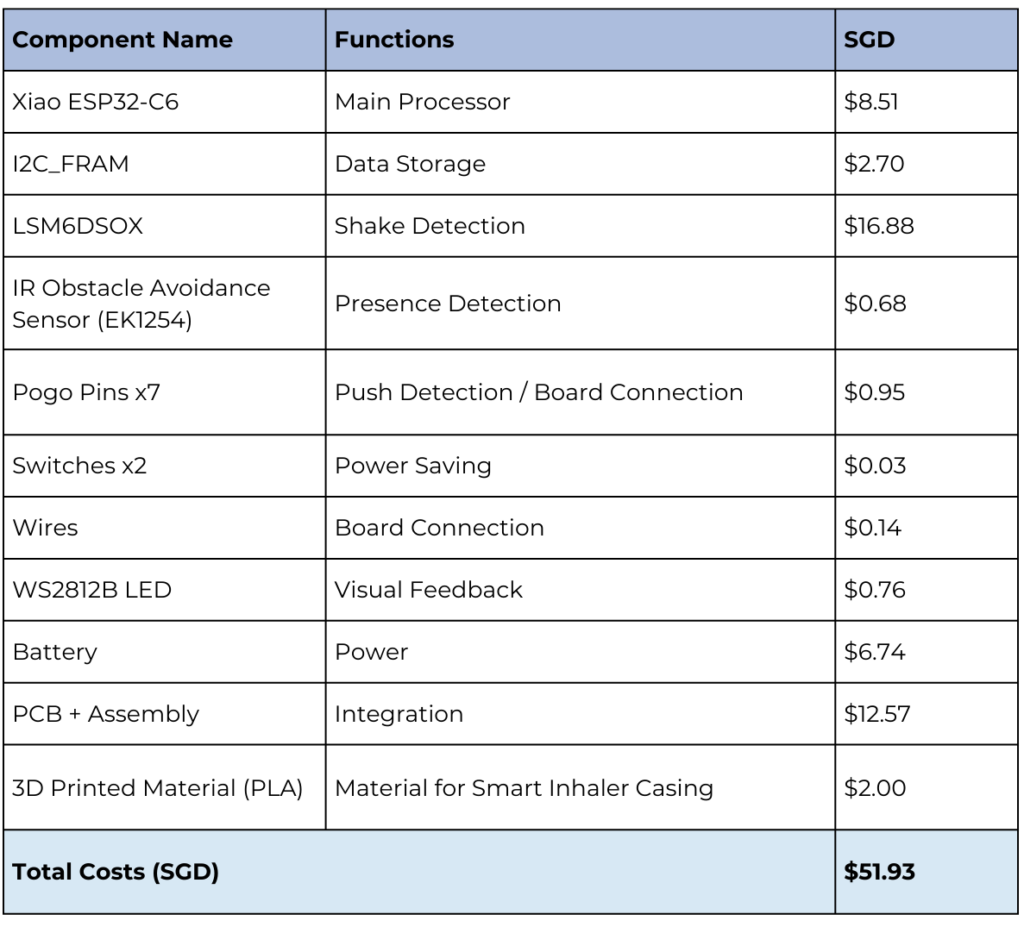
Furthermore, by factoring in maintenance costs over the years based on worst-case scenarios, the maintenance costs has also been verified to be affordable, thanks to the modularity and ease of repair of the Puffin Casing.
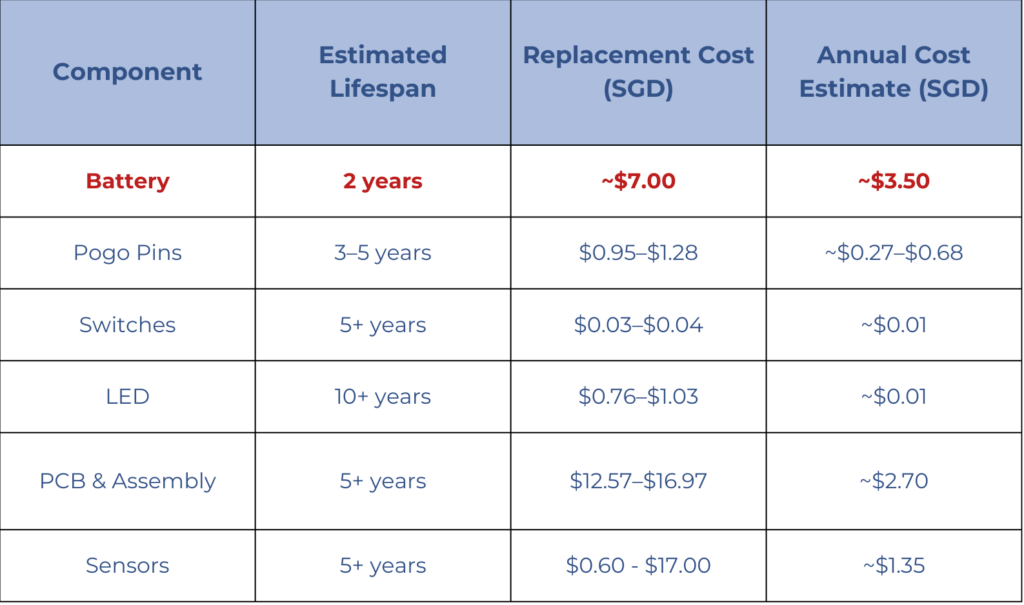
In overall, Puffin has been able to achieve its objectives of tracking asthma medication adherence for patients and clinicians, while remaining cost-effective, easy to use, and compact.
